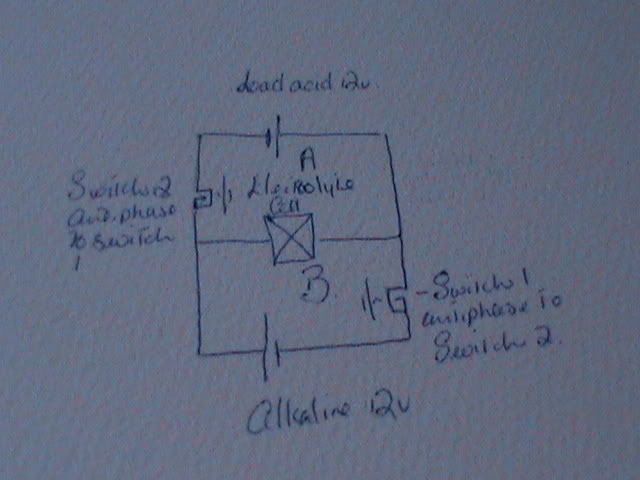Originally posted by HairBear
View Post
Borax or Baking Soda Rectifier and the glow.
In the early days of amateur radio, the dc plate voltage power supply for the transmitter, was often made using homemade rectifiers. From what I have read, these rectifiers would usually consist of an aluminum and lead electrode in a jar of Twenty Mule Team Borax solution. Borax is another name for sodium tetraborate. The aluminum becomes the cathode after a forming process of applying some ac current through the rectifier. Often, many jars were used in order to accomodate high voltages. It has been reported from various sources, that these rectifiers would also emit a faint glow when in operation.
While experimenting with these rectifiers, I have found them to work quite well and I have been able to observe the glow. It was also easy to make full wave rectifiers using more than one rectifier in traditional full wave rectifier circuits.
While experimenting with these rectifiers, I have found them to work quite well and I have been able to observe the glow. It was also easy to make full wave rectifiers using more than one rectifier in traditional full wave rectifier circuits.
 I'll let you know what, if anything, I managed. I must admit I see so much sense in what you're all saying. I'm just hoping that I can get my old head around actual experimentation. It's the measurements, more than anything, that are worrying me. But if I can persuade a chemist on board - then maybe?
I'll let you know what, if anything, I managed. I must admit I see so much sense in what you're all saying. I'm just hoping that I can get my old head around actual experimentation. It's the measurements, more than anything, that are worrying me. But if I can persuade a chemist on board - then maybe?



Comment